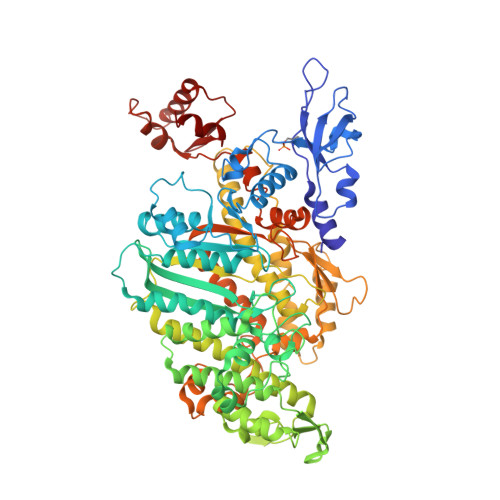Plasmodium myosin A drives parasite invasion by an atypical force generating mechanism.
Robert-Paganin, J., Robblee, J.P., Auguin, D., Blake, T.C.A., Bookwalter, C.S., Krementsova, E.B., Moussaoui, D., Previs, M.J., Jousset, G., Baum, J., Trybus, K.M., Houdusse, A.(2019) Nat Commun 10: 3286-3286
- PubMed: 31337750
- DOI: https://doi.org/10.1038/s41467-019-11120-0
- Primary Citation of Related Structures:
6I7D, 6I7E - PubMed Abstract:
Plasmodium parasites are obligate intracellular protozoa and causative agents of malaria, responsible for half a million deaths each year. The lifecycle progression of the parasite is reliant on cell motility, a process driven by myosin A, an unconventional single-headed class XIV molecular motor. Here we demonstrate that myosin A from Plasmodium falciparum (PfMyoA) is critical for red blood cell invasion. Further, using a combination of X-ray crystallography, kinetics, and in vitro motility assays, we elucidate the non-canonical interactions that drive this motor's function. We show that PfMyoA motor properties are tuned by heavy chain phosphorylation (Ser19), with unphosphorylated PfMyoA exhibiting enhanced ensemble force generation at the expense of speed. Regulated phosphorylation may therefore optimize PfMyoA for enhanced force generation during parasite invasion or for fast motility during dissemination. The three PfMyoA crystallographic structures presented here provide a blueprint for discovery of specific inhibitors designed to prevent parasite infection.
Organizational Affiliation:
Structural Motility, UMR 144 CNRS/Curie Institute, 26 rue d'ulm, 75258, Paris cedex 05, France.


















